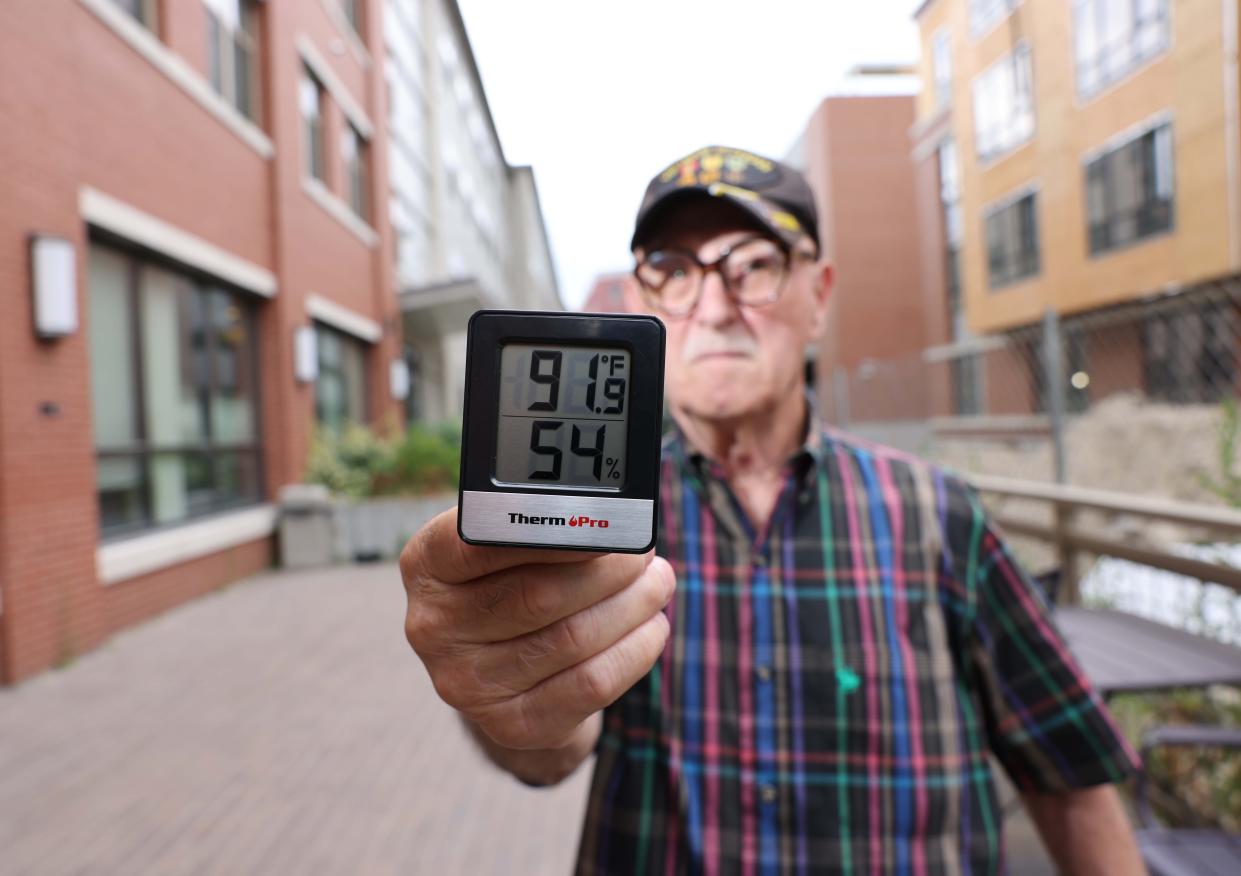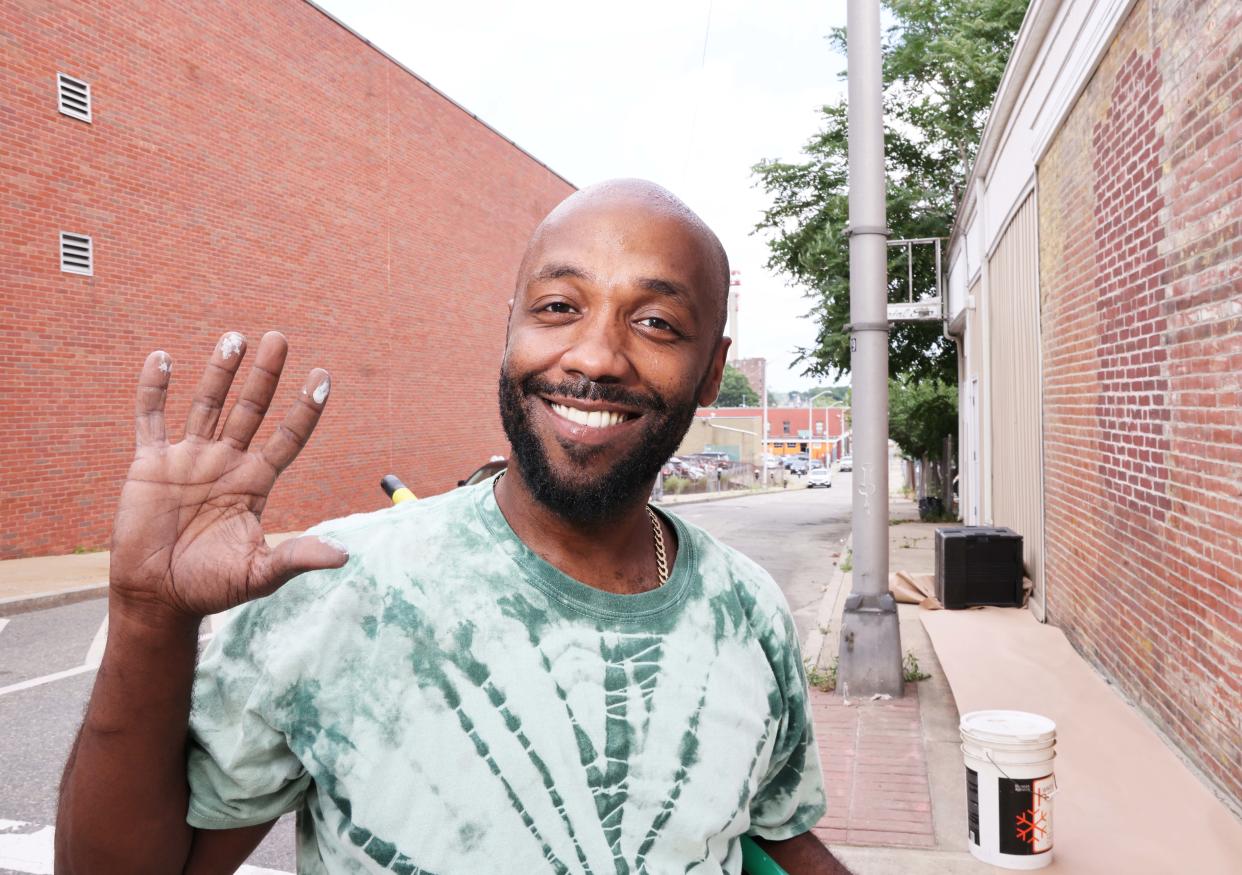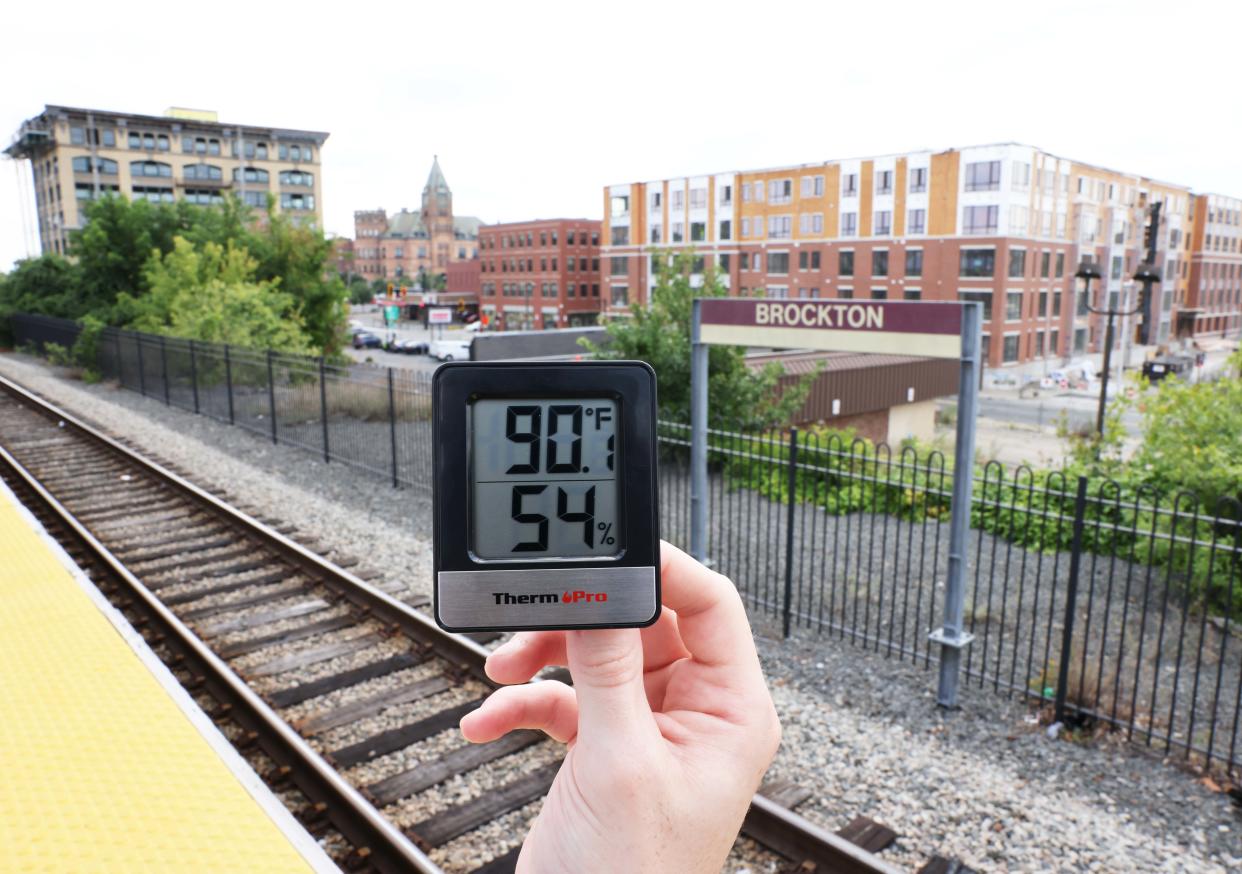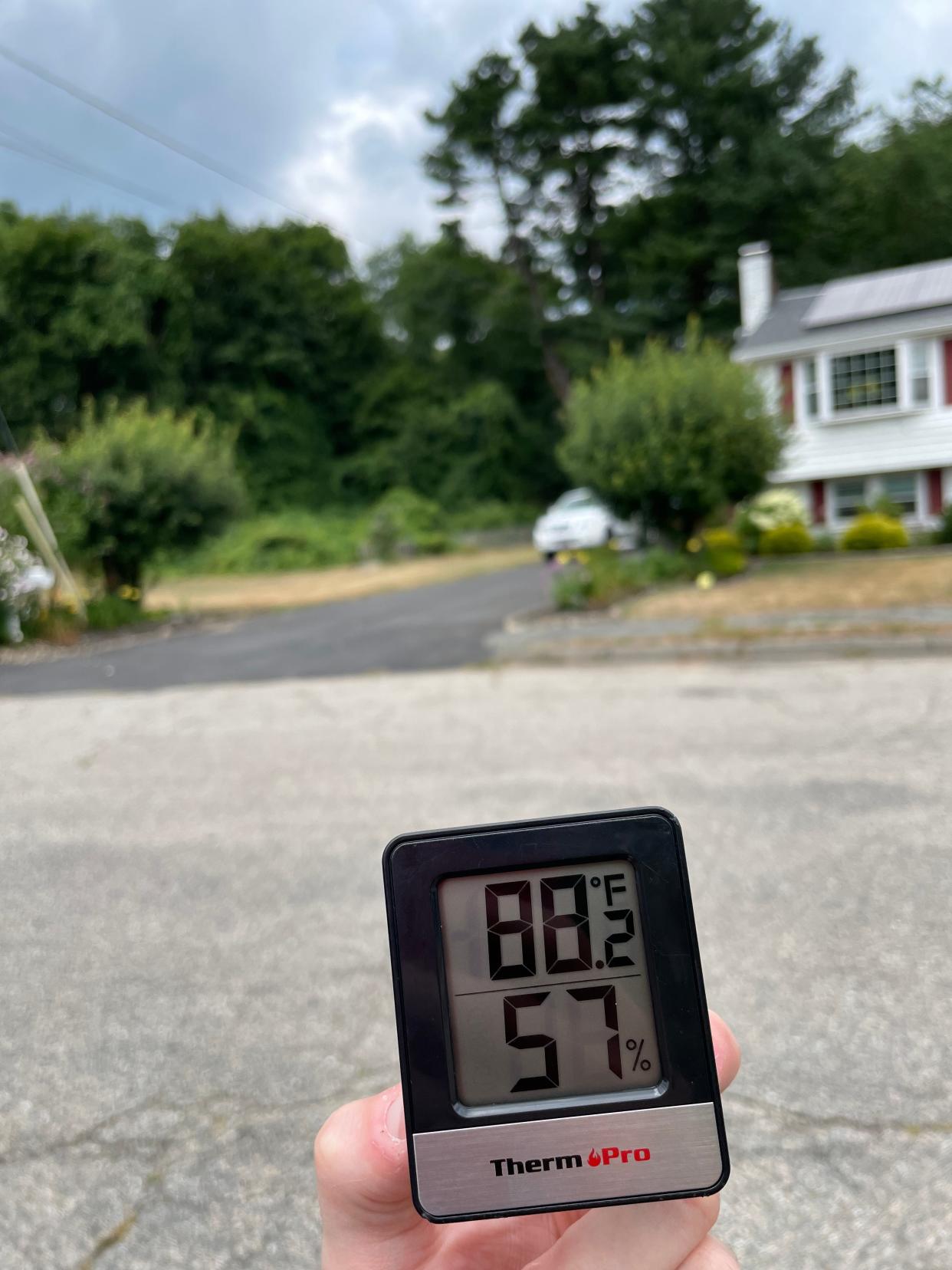How a lack of trees and blazing concrete created a 'heat island' across downtown Brockton
BROCKTON — Tome Andrade, 42, stood outside his business in the heart of downtown Brockton, using a long paint roller to spread white paint across the exterior brick wall of the building.
Sweat was beading down his forehead. It was just before 3 p.m. on a hot summer day, and according to temperatures taken by The Enterprise, it was over 90 degrees.
“I don’t mind sweating when I’m supposed to be sweating,” Andrade said.
Meanwhile, just under 3 miles northeast of Andrade on Maplewood Circle – in a neighborhood bordering Ames Nowell State Park – the temperature was an average of 88.5 degrees, at times getting as low as 87.4 degrees.
“The more residential areas have a bit more trees but in downtown, it gets pretty scorching,” Andrade said.
Just an hour earlier, Dana Peltier, 75, sat on a bench outside his apartment in Enso Flats on Centre Street. The area is surrounded by tall apartment complexes and asphalt parking lots. The thermometer read 91.9 degrees.
“This was all grass and woods here. Now it’s all gone,” Peltier said.

Last week’s heat wave saw temperatures in the Brockton area easily reach into the 90s, with a high of 96 degrees. But like many cities along the East Coast, the presence of "heat islands" disproportionately distributes heat among certain areas within a city.
In residential, suburban and, oftentimes, higher-income areas, lush tree canopies provide protection from the blazing sun, making the area cooler and the air quality higher compared to urban, metropolitan areas of the same city.
In downtown Brockton, tree canopies are replaced by tall buildings, concrete and asphalt, all of which reflect heat, making the area noticeably hotter.

"Large metropolitan areas can be several degrees warmer on a hot summer day in the afternoon than an adjacent area around the more rural areas," said Darcy Boellstorff, chairperson of the Department of Geography at Bridgewater State University.
"That difference creates a microclimate difference."
Living inside a heat island
According to a 2018 study conducted by The Conway School, Brockton's downtown "only has a 7% tree canopy cover." But the greater Brockton area has a tree canopy cover of 28%. The majority of this tree canopy cover is located on the perimeter of the city — in areas surrounding parks like on Maplewood Circle.
Peltier lives at the center of a heat island — an area of a city with limited-to-no green space to absorb the heat. Enso Flats is a 113-unit high-rise that sits across the street from the tallest building in Brockton. Behind it, a 111-unit high-rise is under construction. The building neighbors several parking lots.
Peltier said he doesn't turn the heat on in the dead of winter. His home gets too hot. With the air conditioner on, it still sometimes hits 75 degrees.
"I don't even know if my heat works," he said.
Naomi Walker, 23, has lived in downtown Brockton her whole life. She said the recent heat wave was "brutal," but luckily she has an air conditioner.
"Up there, it’s cooler but down here it’s so humid," she said.
Building homes on green space: Despite neighbors' concerns and 'No' vote Brockton development charges forward

On top of the lack of green space and the surplus of scorching concrete, urban areas suffer from "waste heat," Boellstorff said. Air conditioners, cars, trains and factories blow hot air back into the environment, adding more heat to the local community.
"Our cities are areas where most fossil fuels are being combusted, and so there tends to be lower air quality concentrated in urban areas," Boellstorff said.
Disparities
On the sidewalk just underneath the tall walls of Enso Flats, several people experiencing homelessness wander the city in the heat.
Heat islands typically overlap with lower-income, densely populated areas, while lush green areas are usually in higher-income suburban neighborhoods.
"People started moving outward into the suburbs so they can have these nicer spaces with larger homes and larger green spaces around them, leaving behind the people who are lower income and couldn't make that transition," Boellstorff said.

People of color and immigrants typical live and works in these areas, as well, and minority populations are impacted the most by the effects of heat islands.
"Across the board, in terms of socioeconomics, lower-income people and immigrants oftentimes live in the more inner areas of Brockton, places where there isn't as much access to the natural environment," Boellstorff said.
Solutions
Some U.S. cities have begun initiatives to combat the impacts of heat islands. In Philadelphia, city officials made a goal to increase the city's tree canopy coverage by 30% by 2025. In 2007, New York City began the Million Trees Project to mitigate heat island impacts by planting one million trees in lower-income neighborhoods. The city planted its millionth tree in 2015.
Season cancelled: 'So unfair': BSU track team gets 1,000 signatures to bring back winter season
Adding more green space is an effective way to alleviate heat islands. Building more reflective surfaces, permeable concretes and even adding greenery on top of roofs can also lessen damages.
"If you have tons of money and tons of technology, of course you can probably solve the problem," Boellstorff said. "(But) I don't think there's anywhere that's completely mitigated the issue."
Enterprise staff reporter Chris Butler can be reached by email at cbutler@enterprisenews.com. You can follow him on Twitter at @Chr1sButler. Support local journalism by purchasing a digital or print subscription to The Enterprise today.
This article originally appeared on The Enterprise: Brockton 'heat island' causes socioeconomic disparities amid heat wave
